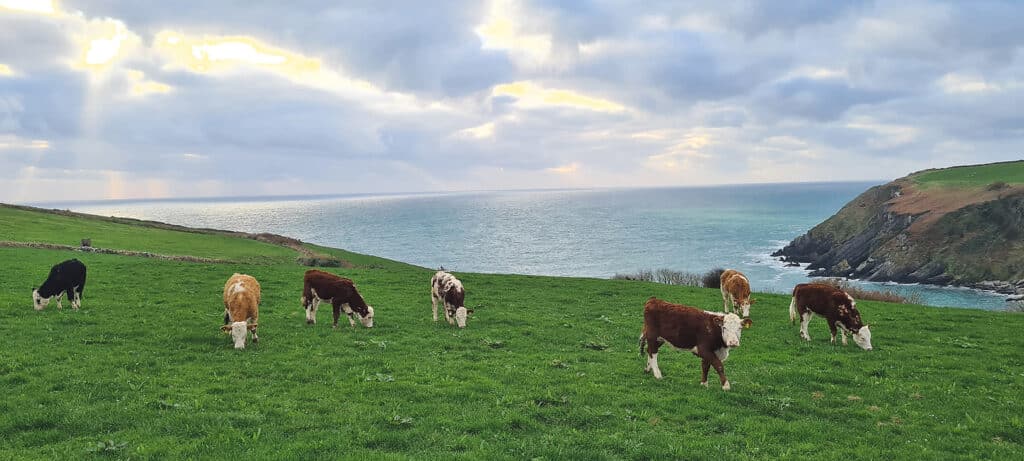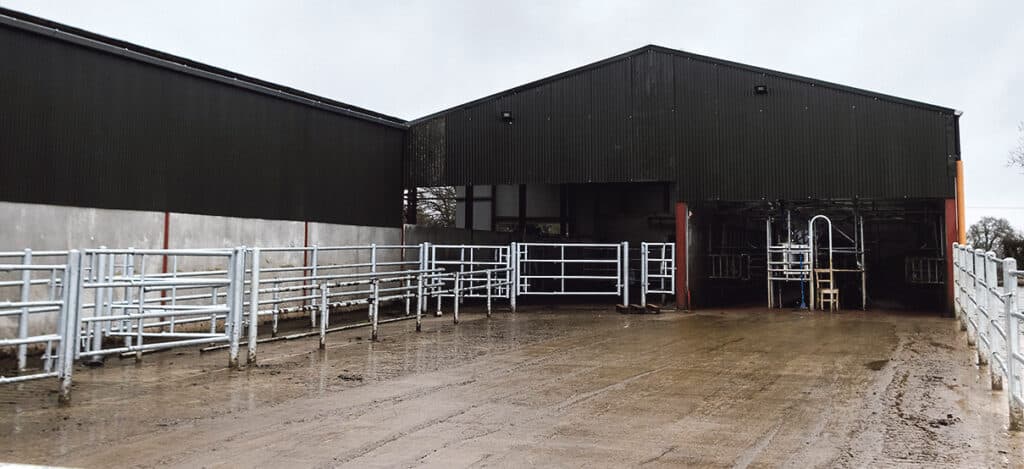
Calving season is well under way on dairy farms in West Cork and due to the good weather there is a good share of cattle out by day at least. The Russian invasion of Ukraine triggered a sharp rise in input prices in particular for fertiliser and fuel and to a slightly lesser extent grain prices. Twelve months ago there was serious concern that those cost increases could lead to farms go bust. The opposite happened and milk prices hit levels never seen before. That went a long way in combating the input prices of similar record levels but almost all milk processors pulled milk price significantly when January prices were announced recently. Carbery had one of the lower drops at 3.8cent/litre while Dairygold lowered their price by 5.7c/litre. These prices were signalled late last year and the challenge now for dairy farmers is how they cope with lower price while input prices remain high. Sheep farmers, after a few record years, are now in a similar position where input prices and a lower demand is putting extreme pressure on farms.
CAP
The new CAP payments system will get up and running shortly and will have a new name, Basic Income Support Scheme (BISS). It’s been a longer than usual road to get this CAP under way with Covid delaying proceedings in this new EU-wide policy that has a high environmental focus compared to previous versions. Farmers displayed their willingness to put their shoulder to the wheel on the environment when the new environmental scheme, ACRES, was oversubscribed. The department have been trying to accommodate all who applied and a combination of this and changes to the IT system have delayed informing farmers as to whether they were accepted into it or not.
Details did emerge recently of another of the new elements of CAP. The Targeted Agricultural Modernisation Scheme III (TAMS III). This provides grants to farmers to build and/or improve a specified range of farm buildings and equipment on their holding. This is part of the CAP Strategic Plan 2023-2027.
It has a funding allocation of €370m and will operate on a tranche basis until 2027. There are 10 scheme or entry routes under the TAMS heading and each of these has their own conditions as summarised below.
• Animal Welfare, Nutrient Storage Scheme (AWNSS) at 40pc grant rate, with a €90,000 investment ceiling.
• Tillage Capital Investment Scheme (TCIS) at 40pc grant rate, with a €90,000 investment ceiling.
• Pig and Poultry Capital Investment Scheme (PPIS) at 40pc grant rate, with a €500,000 investment ceiling.
• Dairy Equipment Scheme (DES) at 40pc grant rate, with a €90,000 investment ceiling.
• Young Farmer Capital Investment Scheme (YFCIS) at 60pc grant rate, with a €90,000 investment ceiling.
• Women Farmer Capital Investment Scheme (WFCIS) at 60pc grant rate, with a €90,000 investment ceiling.
• Organic Farming Capital Investment Scheme (OCIS) at 60pc grant rate, with a €90,000 investment ceiling.
• Farm Safety Capital Investment Scheme (FCIS) at 60pc grant rate, with a €90,000 investment ceiling.
• Solar Capital Investment Scheme (SCIS) at 60pc grant rate, with a €90,000 investment ceiling that is separate from other schemes.
• Low Emission Slurry Spreading Equipment Scheme (LESS) at 60pc grant rate, with a €90,000 investment ceiling that is separate from other schemes.
Solar Capital Investment Scheme
The Solar Capital Investment Scheme (SCIS) opened for applications in late February and the Department has said that the remaining investment categories will become available on a phased basis during tranche one, which closes on June 16. In a previous version of TAMS there has been a three month wait between submission of application and approval so it will likely be August or September before the earliest approvals. With many farmers holding off on applying in the last tranche of TAMS II, there’s a strong possibility that the first tranche this time out will be over subscribed.
Grazing
On the farm there’s been a bit of on-off grazing going on with the last month as ground conditions have been relatively good. Most young stock were brought back in when the rain returned and I held the bigger ones indoors when they went back out again. There’s a bit of a balancing act to the early grazing every year as the farm is fragmented, so it’s not just a case of opening the door and leaving them all out at once.
Calving
Calving began at the end of February and hopefully most will have calved by the middle of April. It’s a time where there’s plenty of unexpected occurrences so it’s a case of being prepared and hoping all goes to plan. There’s enough to keep me busy for the next while at least.



